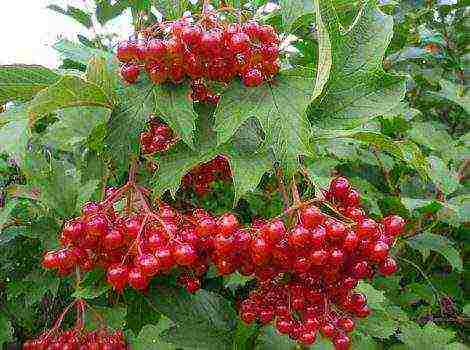Content
- 1 The best varieties of curly beans (photo, description)
- 1.1 Blauhilda curly beans (Bluhilda, Blauhilde, Bluhilda, Blue Hilda)
- 1.2 Fire Red Curly Beans (Turkish Beans, Winner)
- 1.3 Curly Beans Purple Lady (Purple Queen)
- 1.4 Curly beans Harmony
- 1.5 Curly beans Spanish white
- 1.6 Curly beans Borlotto
- 1.7 Vigna asparagus beans
- 1.8 Curly beans Golden nectar
- 1.9 Dolichos (hyacinth bean, curly lilac)
- 1.10 Green Giant Curly Beans
- 1.11 Curly beans Violet
- 2 Types of beans according to the structure of the bush - photo and description
- 3 Types of beans by method of use - names, photos and description
- 4 Types of beans
- 5 Curly beans need support
- 6 How to care for curly beans?
- 7 Curly bean varieties
- 8 Why do you need blanching?
If you decide to plant not only a beautiful, but also a productive plant on the site, climbing beans are perfect for this role. Growing climbing beans, which we talked about in the previous article, like growing a decorative pumpkin, is not difficult. But to choose among the variety of varieties of curly beans one that will satisfy both taste and aesthetic needs is another question.
We propose to solve it immediately. So, the topic of our article is the best varieties of curly beans with photos and descriptions.
To begin with, remember that curly beans, like bush beans, are divided into two main types:
— grain (shelling) beans. The fruits are the well-known beans-beans. The shelling bean pod has a parchment layer inside that fills the space between the beans. This makes the pod itself tough and is generally not eaten.
— asparagus (sugar, green beans)... The main value of green beans, as the name implies, is in the pods. There is practically no parchment layer between the beans in sugar beans, so the shoulder blades grow tender, juicy, crunchy, suitable for freezing. Eat pods of asparagus beans in an immature state. However, if you keep them on the plant to biological maturity, you can harvest beans. True, these grains will be inferior in size to the grains of shell beans.
There are semi-sugar varieties of curly beans - a cross between grain and green beans. The parchment layer in such varieties is present in small quantities, therefore, at a young age, the pods can be eaten as asparagus. As they ripen, the pods become stiffer, and in the future it is grown as a shelling, for the sake of the grains.
The best varieties of curly beans (photo, description)
Blauhilda curly beans (Bluchilda, Blauchilde, Bluhilda, Blue Hilda)
Blauchilda - purple curly beans, and everything is purple in her: flowers, pods and even leaves eventually acquire a dark purple hue. The Blauhilda variety belongs to the late ones, the growing season is 90-110 days, so in the middle lane it is better to grow it through seedlings. It blooms quite early, and blooms until the very cold. Thus, there are always flowers and fruits on one plant.
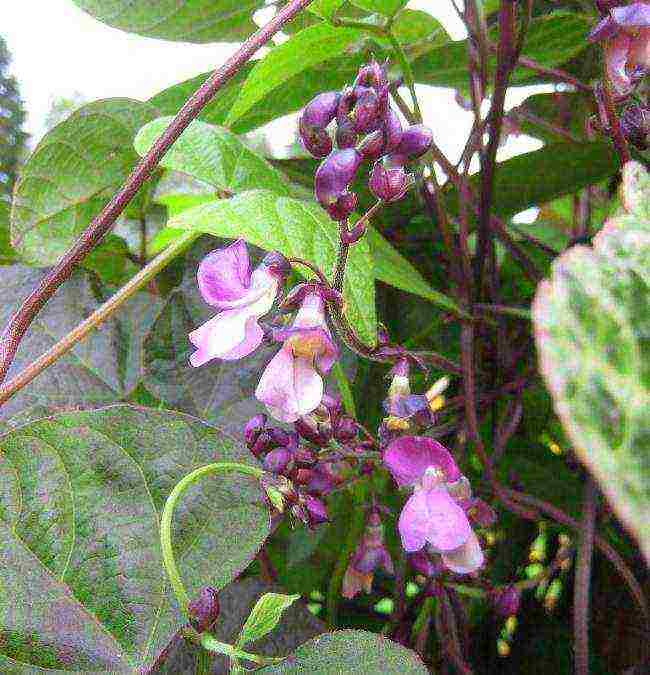 This is how Blauhilda blooms
This is how Blauhilda blooms
This is an asparagus variety of curly beans, the pods are 15-23 cm long, wide, without fibers and parchment, they turn green when cooked, but if they are overexposed a bit in the garden, they can become harsh.But Blauhilda's grains are also good - rather large, beige, boiled - a little oily.
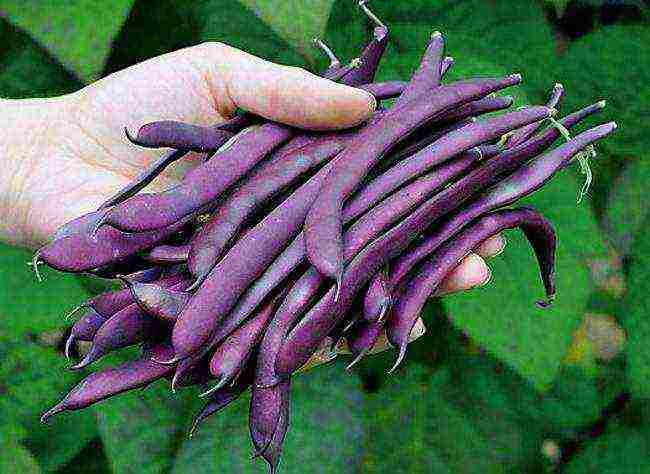 Blauhilda's shoulder blades are fleshy, tender and delicious
Blauhilda's shoulder blades are fleshy, tender and delicious
Separately, it should be said about the decorative qualities of the curly purple beans of the Blauchild variety. The liana of this plant is very powerful, heavy, 3-4 meters long. Consider this and choose a solid support.
 Blauhilda can be used to effectively decorate the backyard
Blauhilda can be used to effectively decorate the backyard
Fire Red Curly Beans (Turkish Beans, Winner)
This variety of decorative curly beans is found most often in our latitudes. And it's not strange - Fiery red beans unpretentious (afraid only of frost, even the lightest), grows up to 2.5-4 m in length, its flowers are bright red, small, stems are thin, foliage is thick, bright green. A very showy plant.
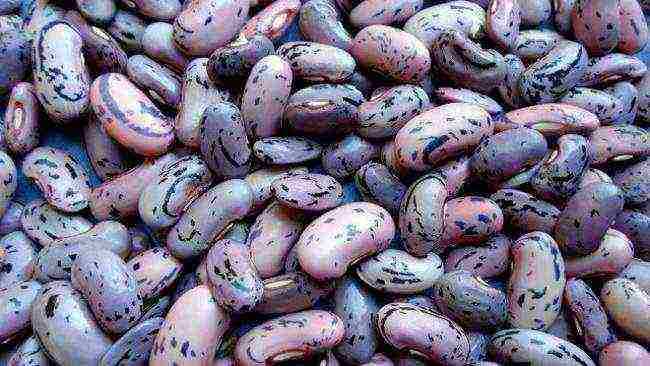 Fire-red beans have decorative not only flowers and leaves, but even grains.
Fire-red beans have decorative not only flowers and leaves, but even grains.
In our country, all plants of the Phaseolus coccineus species are called Fiery Red Curly Beans, but representatives of this species bloom not only with red, but also pink, and white, and white-pink, and red-white flowers. Accordingly, their grains will differ in color: in the classic Fire-red beans they are light purple with a black pattern, in pink-white varieties - light pink with a brown pattern, in white ones - white.
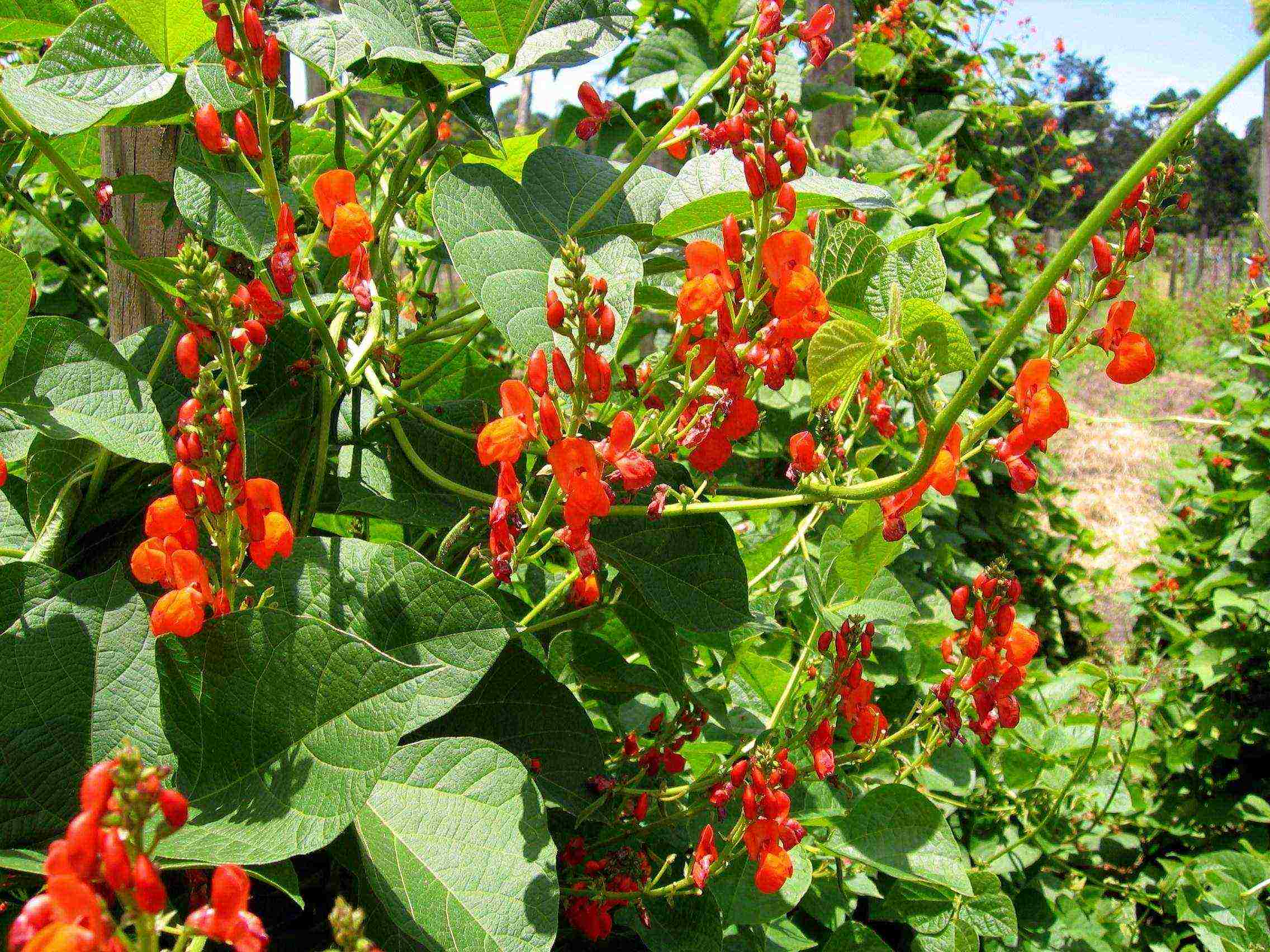 Beans Fire-red curly ornamental
Beans Fire-red curly ornamental
Fiery red decorative beans bloom from June to September. Its fruits can be used in a young form as asparagus beans, in ripe form as grains. Both young and mature beans are boiled before eating, since raw beans contain toxic substances that quickly break down during cooking. Experienced gardeners say that although the fruits of Turkish beans are edible, they do not differ in anything particularly outstanding in terms of nutrition ("beans are like beans"). Therefore, the Fiery Red curly beans are, first of all, an ornamental plant.
Curly Beans Purple Lady (Purple Queen)
Curly asparagus beans of the Purple Lady variety is a low liana (up to 1.5 m) with large purple flowers and dark purple tubular beans 15-18 cm long. This is a mid-early variety - 50-55 days after germination, you can enjoy the first harvest. Purple Lady's Asparagus Beans are white and delicious. The Purple Lady differs from Bluhilda mainly in a thinner, less massive vine, and more abundant fruiting.
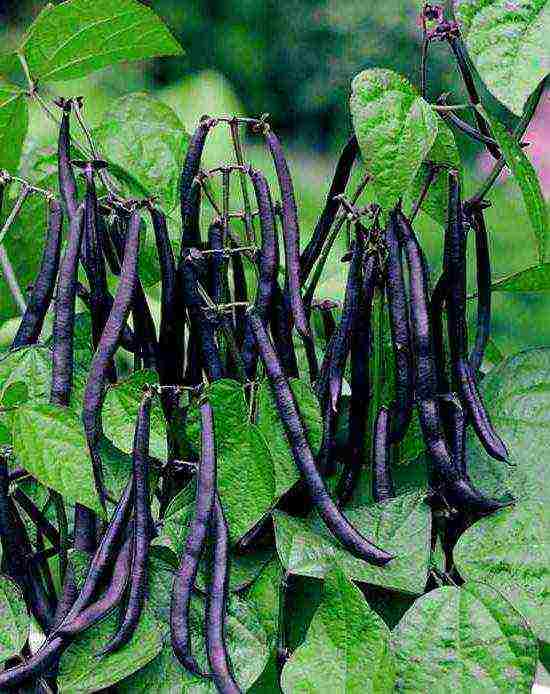 Purple Curly Beans Purple Lady (Purple Queen)
Purple Curly Beans Purple Lady (Purple Queen)
Curly beans Harmony
Refers to varieties of mid-season universal, that is, you can eat pods curly bean harmony in a young form, and in a more mature form - grains. This variety is distinguished by reliability, unpretentiousness, good germination, long fruiting period (from 65-80 days after germination to frost), long golden pods about 20 cm long. Beans from one plant can be collected 0.3-0.5 kg, grains are white, elongated. When planting, take care of good support, since the Harmony curly beans grow up to 3-4 m in length and weigh a lot. Braids any hedge, looks elegant.
 Curly beans of Harmony variety
Curly beans of Harmony variety
Curly beans Spanish white
Curly beans Spanish white possesses one undoubted superiority - gigantic, delicious grains, which are 5-6 times larger than the grains of conventional shelling varieties. At the same time, Spanish white beans are not just big - they are also extremely tasty, with a delicate thin skin. If you like borscht, lobio, canned and stewed beans, we highly recommend that you plant the Spanish curly beans. This is a purely shelling variety, the pods are not eaten. The pods themselves are bright green, oval, relatively short (11-14 cm) and wide (about 2.5 cm), contain 3-5 large beans. The Spanish White Curly Bean is a medium-late variety (vegetation period - 72 days).
 The beans of Spanish white beans are huge
The beans of Spanish white beans are huge
As for the decorative qualities, here, too, the Spanish white is not a miss. Liana is strong, up to 4 meters high. It blooms profusely with large white flowers, so it is also used for landscaping.
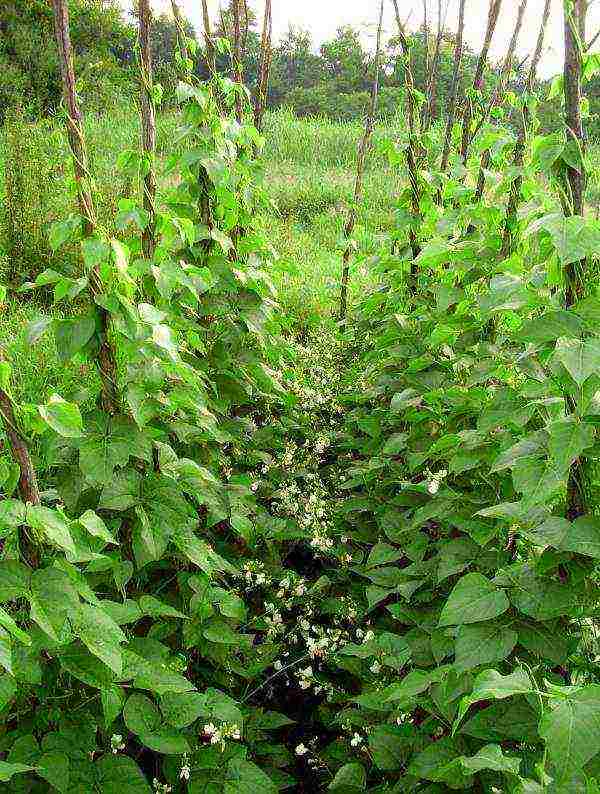 As an ornamental plant, Spanish white beans look very impressive.
As an ornamental plant, Spanish white beans look very impressive.
Curly beans Borlotto
This is an Italian guest who has managed to fall in love with Russian gardeners. And all because it is asparagus beans with delicious beans, a beautiful strong liana up to 3-3.5 m high and an unusual, fiery color. Curly Beans Borlotto blooms in red. The Italian beans are very interesting - at first they are flat and green (length - 12-14 cm, width - 1.5-2 cm), but over time a dark red marble pattern appears on them. There are 4-5 grains in one pod, and they are very tasty unripe, easy to boil, have a light nutty flavor. As they ripen, a dark pattern appears on them, as on the pods.
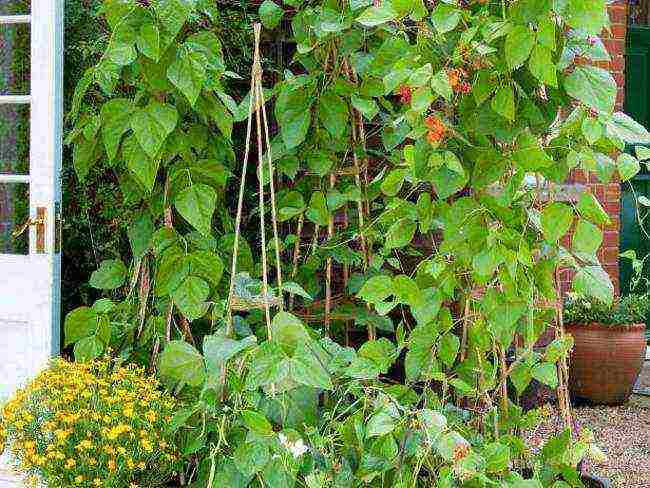 Curly beans Borlotto
Curly beans Borlotto
The technical maturity of the Borlotto variety is considered to be unripe green beans, which do not yet have a pattern. They are harvested 55-60 days after planting. And if you want to use this variety as a legume, do not wait until the pattern appears on the beans, but pluck them green.
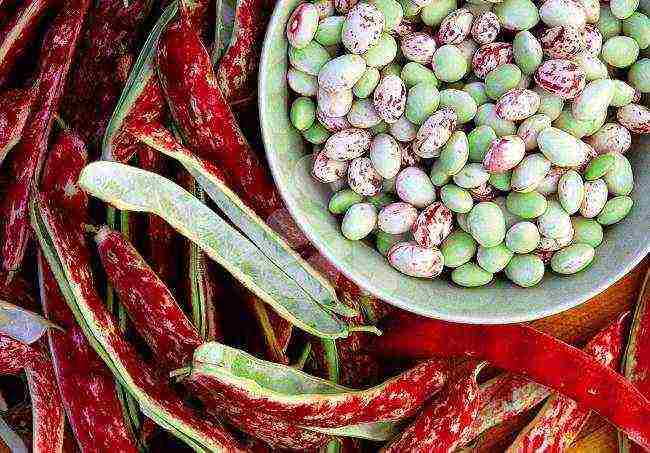 Green beans, prior to the appearance of the pattern, are considered the most valuable in Borlotto, although green beans are also good in dishes
Green beans, prior to the appearance of the pattern, are considered the most valuable in Borlotto, although green beans are also good in dishes
Vigna asparagus beans
Vigna is not really a bean, and her own sister is originally from Africa, but today it is widespread in Japan, China and other Asian countries. Since the cultivation of cowpea is a separate topic, we will briefly mention this amazing plant here. This is an extremely productive variety of asparagus beans, quite whimsical to care for, but the appearance of the cowpea is something. Where else can you see pods 1 meter long! It blooms purple at night, while in the daytime the flowers close and acquire a yellow-brown hue. Curly forms of cowpea grow 1.5-3 meters, and up to 200 beans are harvested from one plant.




Curly beans Golden nectar
This variety is suitable for lovers of asparagus beans. Curly Beans Golden Nectar grows up to 4 meters in height, the shoulder blades are yellow-gold and very long, up to 25 cm. Ripen quickly - in 65-70 days. For culinary purposes, it is recommended to use unripe pods and unripe beans from the Golden Nectar curly beans. The fruits are white in color and have excellent taste.
 Curly beans asparagus Golden nectar
Curly beans asparagus Golden nectar
Dolichos (hyacinth bean, curly lilac)
Dolichos is one of the varieties of cowpeawith a very striking appearance. In India, dolichos grains are widely used for food, but in our country the taste qualities of dolichos grains have not yet been appreciated. We consider hyacinth beans to be simply an ornamental variety of curly beans. Although it can be used as green manure or livestock feed. Dolichos grows up to 4 meters in height, the leaves are green, purple, and reddish, depending on the variety. The flowers of the curly bean dolichos are collected in graceful fragrant inflorescences. Their color can be pink, and white, and raspberry, and purple, and even two-color. Dolichos pods are also elegant - green, burgundy or dark purple, they adorn the plant until the very frost.
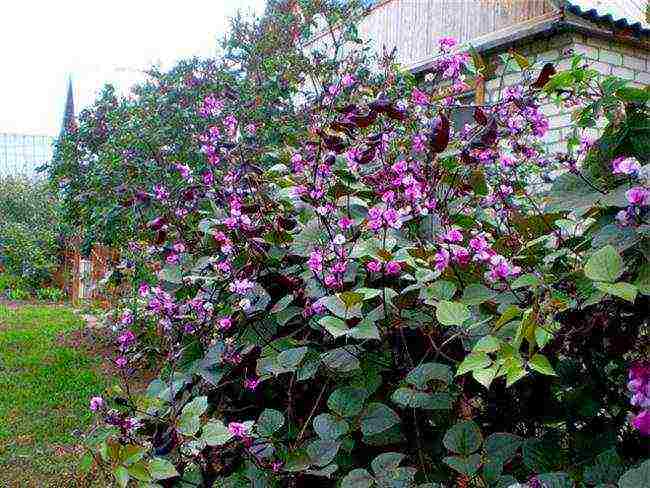 Dolichos ornamental beans
Dolichos ornamental beans
Green Giant Curly Beans
Among other varieties Asparagus Curly Bean Green Giant it stands out in large pods up to 22 cm long, very tender, sugar-free, without fibers and parchment. Liana can grow up to 3 meters in height. The variety bears fruit for a very long time, from 55 days after planting until the very cold. Beans of the Green Giant variety bloom with small purple flowers.
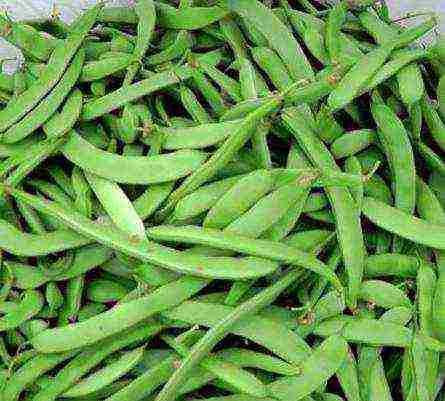 Green Giant Curly Beans
Green Giant Curly Beans
Curly beans Violet
It is a peeling bean variety that grows up to three meters in height. Beautiful and pods curly beans Violet - pale purple. The grains are initially green, over time they acquire an intense dark purple color.
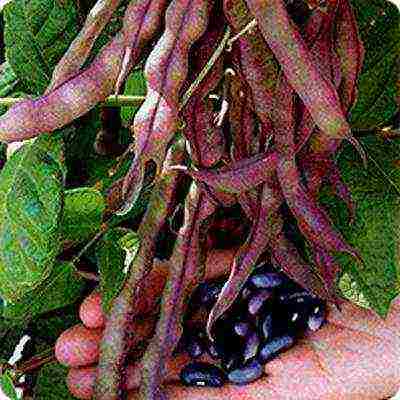 Violet curly beans
Violet curly beans
There are many more varieties of curly beans. But in pursuit of beauty and taste, do not forget about the main feature of curly beans - a dislike of cold weather. She is afraid of both late spring frosts and the first autumn ones. Therefore, residents of the middle lane need to either give preference to early and mid-season varieties, or grow curly beans through seedlings. Otherwise, you will not have time to get a decent harvest of beans, whether it is at least three times fertile and decorative. As in the case with other crops, it is better to give preference to local varieties, or varieties of Russian, Ukrainian selection. Good luck with your garden experiments!
Tatiana Kuzmenko, member of the editorial board Sobcor of the Internet edition “AtmAgro. Agroindustrial Bulletin "
Beans are a valuable source of protein, vitamins and microelements. When choosing a variety for planting, first of all, the method of eating the future harvest is taken into account - only grains or green pods. In addition, it is important to take into account the type of plant - bush or climbing. Some beans are intended for greenhouse cultivation, others for outdoor cultivation. The flavor, size and color of the beans are also taken into account.
In this article on our farm site, we will provide you with the best beans varieties with photo and title. The description of varieties will contain the most significant characteristics when choosing. We will help you choose a worthy variety of beans for yourself, based on the experience of experienced gardeners.
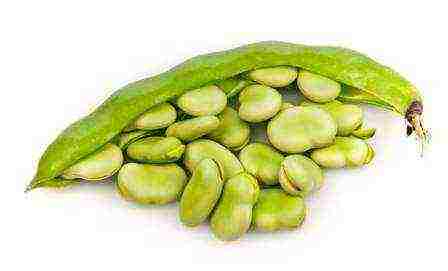
See also: When to harvest beans and how to store them correctly?
Types of beans according to the structure of the bush - photo and description
By the way the bush is arranged, types of beans are distinguished with the following names:
• Bush - compact low-growing bushes - 40-60 cm. Most of all, such beans are suitable for farmers, that is, for growing on an industrial scale. Bush beans are distinguished by early fruiting and a harmonious return of the harvest. Even harsh weather conditions are easily tolerated.
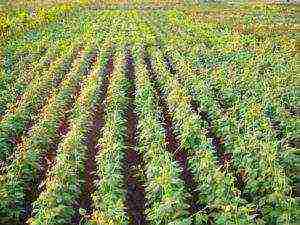 Pictured is a bush bean plantation
Pictured is a bush bean plantation
• Half-shoe Are leguminous vines that stretch 2 m in length.
• Curly - this group includes varieties with lianas branches that can reach 5 m. The advantages of climbing beans are that they save land space and decorate the site. But since her growing season is long, she is not advised to grow in cold climates in the open field.
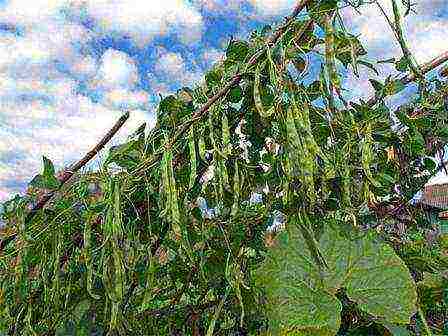 In the photo curly beans
In the photo curly beans
Types of beans by method of use - names, photos and descriptions
Depending on the use of the crop, the following varieties of beans are distinguished:
• Peeling - only grains are eaten, the pods are too tough for use in cooking. These varieties are especially nutritious.
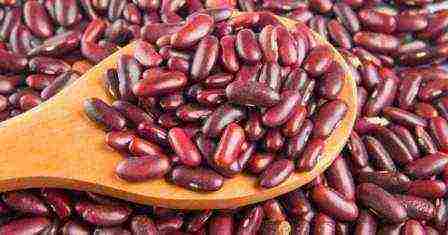 Shelling, or grain, beans
Shelling, or grain, beans
• Asparagus - grains are used together with the pod, which remains soft throughout the growing season.
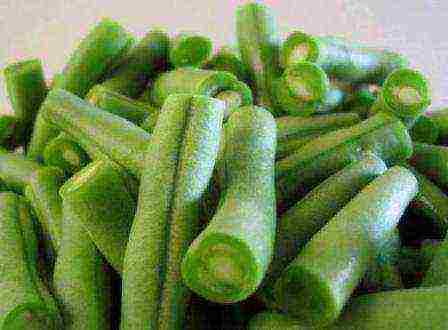 In the photo, asparagus beans, eaten along with the pods
In the photo, asparagus beans, eaten along with the pods
• Semi-sugar - until fully ripe, it is used as an asparagus, but at the end of the growing season the pod coarsens and becomes unsuitable for food.
Types of beans in appearance and nutritional value
String beans are presented in a variety of varieties that differ in color: green, yellow, purple. All varieties of hulled beans are divided into types according to the characteristics of the beans:
• Fava - dark brown beans can be eaten with the pod and, once fully ripe, without it.
In the photo, fava beans
• Vigna - the color of the beans is white with a black speck on the side. Varieties need less cooking time.
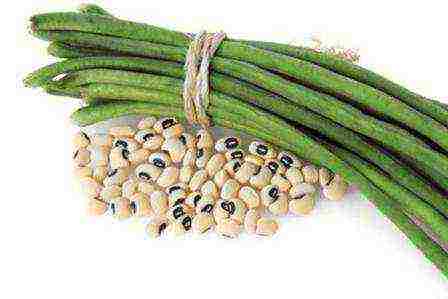 Vigna beans
Vigna beans
• Chali - large white grains with special benefits for the body.
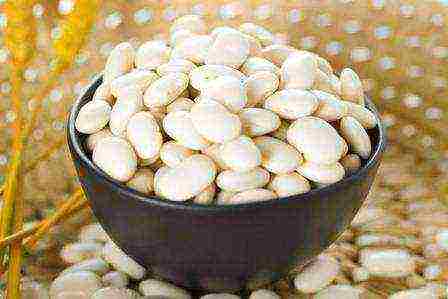 Chali beans in the photo
Chali beans in the photo
• Flajole - more often consumed with pods, the beans are green.
 Beans Flazhole
Beans Flazhole
• Pinto - White beans with bright red spots and high iron content.
 Pinto beans
Pinto beans
• Black - small grains are dark outside and light inside; are characterized by a high protein content and antitumor effect.
 Black beans - photo matches description
Black beans - photo matches description
• Kidney - red beans.
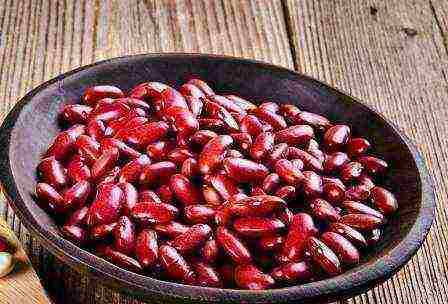 Kidney beans
Kidney beans
• Lima - large white or green grains that strengthen the circulatory system.
 In the photo, Lima beans
In the photo, Lima beans
• Navy - small white grains, similar to beads and contain an abundance of vitamins.
 A type of beans called Nevi
A type of beans called Nevi
Popular varieties of bush asparagus beans with photos and descriptions
Asparagus beans are not yet so popular in Russia, nevertheless, gardeners have already identified some varieties that grow well in our climate.
Sachs
Compact bushes up to 40 cm in height delight with the early appearance of useful pods, the length of which reaches 12 cm. The beans are pink.
 Sachs bean variety
Sachs bean variety
Oil king
A variety of beans, which is distinguished by early maturation and compactness of the bush. The pods are yellow and long - 25 cm. According to the description, this variety practically does not get sick and tolerates a lack of moisture well.
Beans Butter King by description are very oily
Purple queen
Medium ripening variety with 15 cm long purple pods for canning. Beans with this name are considered one of the most picky to grow.
 In the photo, the Purple Queen beans
In the photo, the Purple Queen beans
Panther
Beans with this name are distinguished by the average aging period and the yellow color of the pods. According to the description, it is suitable both for consumption immediately after processing and for conservation.

Best Asparagus and Semi-Sweet Curly Beans - Names and Photos
With the help of climbing varieties of beans, you can get not only a rich harvest, but also an excellent decoration of the land. They can be an element of decoration for a fence or gazebo. Bright and delicate flowers create a charming atmosphere on the site (see photo). Curly beans are more often grown in a greenhouse, especially in cold regions.
The names of popular varieties of sugar curly beans in Russia:
• Winner - very decorative bean with red flowers and long pods, ripening in 3 months.
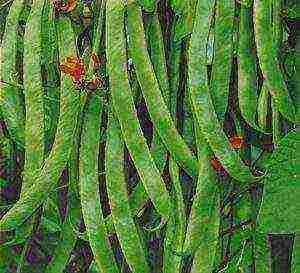 Beans of the winner variety have a high decorative effect
Beans of the winner variety have a high decorative effect
• Melody - early ripening (2 months) curly beans with medium long pods.
• Golden nectar - characterized by long yellow pods and a medium ripening rate (about 70 days).

The best semi-sugar beans
Semi-sugar beans can be eaten with the pod until fully ripe and as cereal when fully ripe. The most popular are:
• Rant is the name of a semi-sugar bean with green, medium-sized pods.
• Secunda is the name of an early maturing variety with medium pods.
 In the photo, beans of the Rant variety
In the photo, beans of the Rant variety
Grain beans - description and photos of popular varieties
Hulled beans are very nutritious and healthy. They are stored without pretreatment, and before cooking they are soaked in water for several hours. The coarse and fibrous pods of such beans are impossible to eat.
Popular varieties:
• Ruby - dark cherry grains that look very decorative.
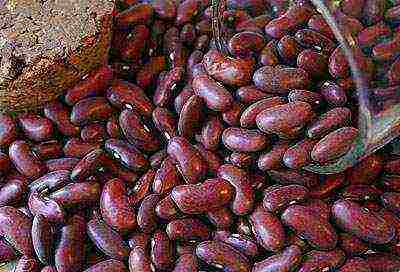 Ruby beans correspond to the name
Ruby beans correspond to the name
• Gribovskaya - white beans fully ripen in three months.
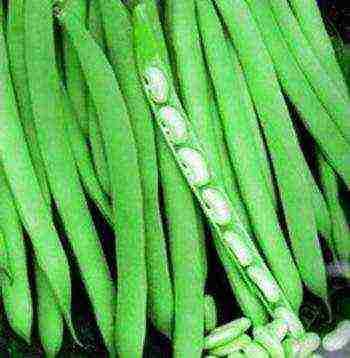 In the photo, beans of the Gribovsk variety
In the photo, beans of the Gribovsk variety
• Swallow - beans of an interesting shape, white with purple splashes.
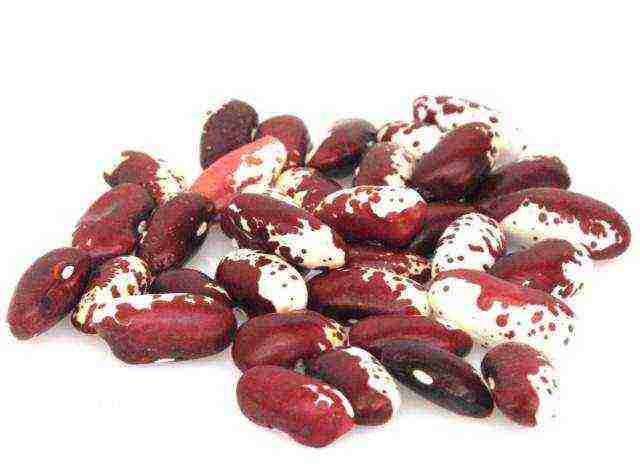
• Chocolate bar - as the name suggests, the beans are brown, the plant is very thermophilic.

We examined the most popular varieties of beans in Russia with a photo and a name. The descriptions of the varieties contain the most important characteristics that should help you make the right choice. Remember, beans are the most valuable food product that can be completely replaced with little.
Watch the video: Types of beans. Choosing seeds! Grain and asparagus beans
The history of beans is almost 7 thousand years old.Belongs to the legume family, more than 250 species are currently known, but about 20 are most often used, which include the climbing one. The culture owes its rich history to an equally rich, very useful composition: a full set of vitamins, a huge range of micro and macroelements, fiber, carbohydrates, fats, pectin and a vegetable protein so necessary for a person, in terms of which it is second only to meat! What kind of beans we learn from the article.
Types of beans
There are many different types and varieties of this crop, but for any there are general rules for growing and care. Any type of beans is thermophilic, therefore, seeds should be planted in the first half of May, when the soil warms up to 12-14 degrees. For faster germination, it is recommended to soak the seeds overnight in water, and just before sowing - for 5 minutes in a solution of boric acid. This will strengthen seedlings, increase crop productivity.
Legumes have the ability to saturate the soil with nitrogen - nodule bacteria take it from the air, so the plant is a good precursor for many vegetable crops in the garden.
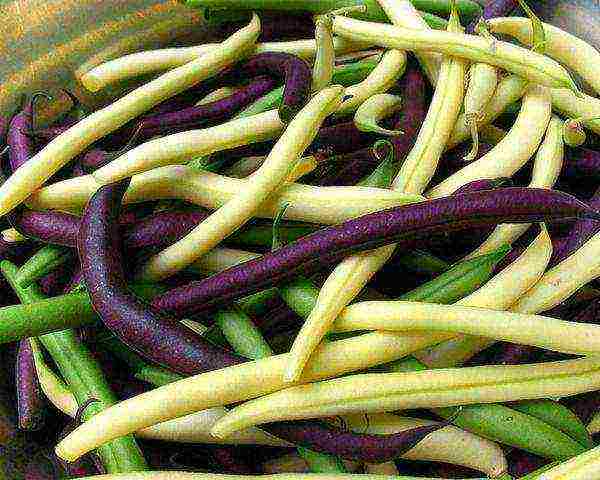 Types of beans
Types of beans
Growing bush beans
This species looks like small bushes up to 60cm high. It can grow in the shade of tall trees, between currant bushes, gooseberries, but you cannot shade too much - it will affect the yield. Planting depth - no more than 2 cm, otherwise the seeds will die even during the swelling in the soil. The plant loves soil fertilized with humus, reacts well to feeding with nutrients. It can be planted quite densely - rows at a distance of 30 cm, between seeds - 4-5 cm.
Bush beans require double hilling for greater stability. From the moment of emergence to the ripening of the tender green beans, it takes about 55 days. Pods, edible, very delicate in taste, fiberless, especially in sugar varieties.
String or green
Italians were the first to figure out how to use unripe pods from Europeans for food. Dishes made from green or yellow French beans have a surprisingly delicate taste, very low calorie content - only 25 kcal / 100g of product, rich in vitamins and microelements (more than in grains), although the protein content is inferior to dry grains. Green beans produce excellent yields... Its benefits for the body are also difficult to overestimate:
- helps to improve digestion;
- lowers blood sugar levels;
- a high level of sulfur content has a prophylactic effect in case of infectious intestinal diseases;
- fiber, protein, carbohydrates, trace elements have a beneficial effect on the state of the body, in particular, improve the structure of hair and skin.
Curly variety
Actually, all types of beans can be divided into bush and curly beans. The latter have especially many varieties.
The following characteristics are common to them:
- unpretentiousness and high growth rate, which makes it possible to bloom and bear fruit from mid-June until the onset of cold weather;
- variety of shapes and colors of inflorescences, pods, grains;
- soil enrichment with nitrogen.
Collecting the pods regularly throughout the summer encourages the formation of new ovaries. With a small occupied space, the curly species of this culture gives an excellent harvest, if tied up in time, it performs a decorative function, so it can be planted near a fence, a gazebo, under a balcony. Growing conditions and useful properties are the same as in other types of culture.
Asparagus or vegetable
This is a relatively recently bred variety of beans for consumption exclusively in green (unripe) form. The pods are green or yellow (depending on the variety), thin, 12-15 cm long, very delicate taste, juicy, sugar flesh, without coarse fibers. The bushes are low - from 30 to 70 cm, compact, but despite the size of the plant, they yield up to 1 kg of beans per season.
All varieties of beans are usually divided into sugar and semi-sugar beans.Sugar pods are intended for eating pods, which have a circular cross-section filled with a jelly-like substance. The semi-sugar pods are flatter, the jelly is much smaller than the former. Such varieties are universal: both pods and grain are suitable for consumption.
In order to have a good harvest all summer, you need to plant different varieties, taking into account their ripening terms - from early ripening varieties (65 days from germination to technical ripening) to late (100 days). Small bushes do not need props, are resistant to cold, early ripening.
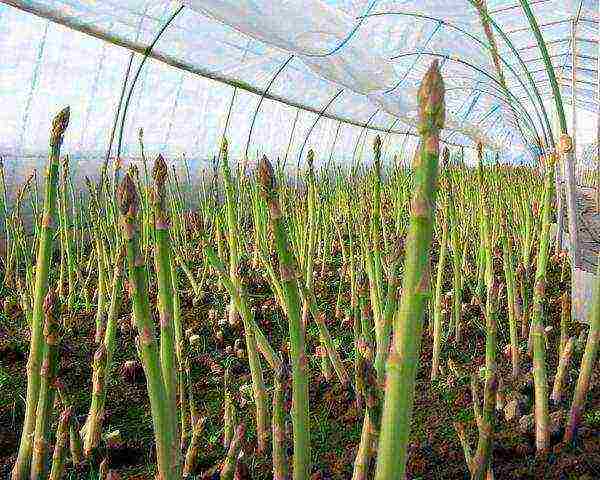 Black Eyed Peas
Black Eyed Peas
Purple
In addition to the usual green and yellow green beans, plants with dark purple pods have taken root well in the gardens: Bluhilda variety (Germany), Violet King (Austria), etc. At first, the ovary on vines is of the usual green color, but when the pods reach a length of 10 cm, the color immediately changes to purple.
If you compare these two varieties, Bluhilda's pods are more fleshy, but before ripening, the valves coarse and fibers appear. Beige grains, oily, very tender and tasty, boil quickly. The beans of the Purple King are flat, less fleshy, but without a parchment layer, they are not inferior in taste to the first ones. During the cooking process, they change color to green.
Shelling (grain)
Hulling varieties are grown exclusively for the production of grains, although they often ripen quite late.
For example, in central Russia, the grains of such varieties do not ripen, and the pods, even in the early stages of ripening, have a dense fibrous structure that is not suitable for human consumption.
But, of course, if you grow them in a warm climatic zone, you can get an excellent harvest of very nutritious, rich in vitamins and minerals, with a high protein content.
The most common varieties: Ballada, Rubin, Zolotistaya, Varvara, Generous, etc. They are valued for their high yield and taste.
What color are beans?
White
The grains of such beans have a milky white color, a firm structure. The main advantage of white beans is their high protein content - 20%. In terms of benefits for the body, it is comparable only with beef protein, and, moreover, it is devoid of animal fat, which makes it difficult to assimilate such a vital substance for humans.
Beneficial features:
- removes toxins and toxins;
- reduces the level of bad cholesterol in the blood;
- has a beneficial effect on the cardiovascular system;
- can be used during diets, as it is saturated with useful substances with a low calorie content (120 kcal / 100g).
Red
Red grains are low in calories (94 kcal), contain a large amount of vitamins B6, B12, B1, A, C, E, PP, amino acids, lysine, arginine, magnesium, calcium, iron, copper, zinc, etc. Due to such a rich chemical composition, red beans have a beneficial effect on the functioning of many organs and systems of the human body. - nervous, circulatory, gastrointestinal tract, strengthens the immune system, improves the condition of hair, teeth, skin.
Black
The benefits of black grains are enhanced by the even greater concentration of all the ingredients that make up their composition.
The richer the color of the beans, the more nutrients it contains.
Black grains are most commonly found in Latin American dishes and are sweet and smoky. Black beans are the richest in chemical composition; in terms of nutritional and medicinal value, they rank first among the products of plant origin. Suffice it to say that black beans are the most useful food for the prevention of cancer and diabetes.
As you can see, the benefits of this product can hardly be overestimated. Eating beans at least twice a week in different forms - salads, first, second courses, etc. - will certainly have a beneficial effect on your body.Even outwardly, it will become noticeable - velvet skin, shiny hair, beautiful nails are provided to you with regular use of beans in general and black beans in particular.
Our family loves beans. Unfortunately, she also likes slugs, which leave ugly stubs instead of pods. This problem does not arise if not bush, but curly beans are grown. She not only bears fruit abundantly, but also decorates the site.
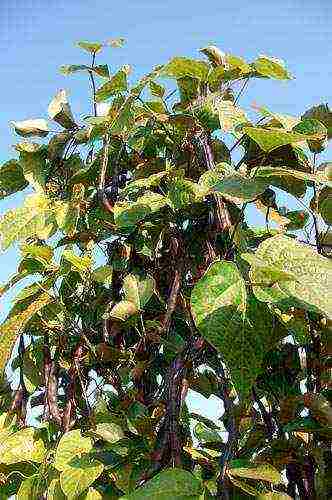
Curly beans are very beautiful
Curly beans need support
Common beans can be bush (up to 70 cm), semi-peeling (70 - 1.5 m) and curly (1.5 - 3 meters or more). Curly and semi-climbing are grown with a support that is made specifically for this culture, they adapt some kind of structure, or they let beans on a dry or growing tree. The most stable support is obtained from bars or rods (with a "slingshot" at the end) 2 - 2.5 m high. They are connected from above with a strong rope or wire. You can tie long rods to give the structure a pyramid shape.
Curly beans are primarily a vegetable crop, which is also decorative. It can be used to decorate pergolas, gazebos and fences. I saw at an experienced gardener young trees that had not yet begun to bear fruit, on the branches of which were curly beans. The owner of the garden argued that such a neighborhood is good for the trees, because legumes are well-known suppliers of nitrogen. Vertical planting of climbing beans saves space in small areas and decorates them during flowering and fruiting.
How to care for curly beans?
Several seeds can be planted near each support, placing them at a depth of about two centimeters. If you put the seeds deeper, they can die. Do not sow too early while the ground has not yet warmed up, as sowing in cold soil will cause a lot of seeds to rot. I sow thermophilic climbing beans from late May to early June. At such times, seedlings do not run the risk of falling under spring frosts. When it gets cold, I cover early shoots with lutrasil or other non-woven material. I spud the seedlings when they grow up to 15 cm in height. I gently wrap the tops around the support so that they do not spread along the ground and do not cling to neighboring plants. Curly beans are easy to care for. These are loosening of fertile soil, weeding, watering and feeding. I pinch long lashes at a height of 2 - 2.5 meters. Beans should be planted away from the wind.
There are shelling, semi-sugar and sugar (asparagus) varieties of curly beans. I only grow asparagus beans in which the pod seams do not have coarse fibers, and the leaves are devoid of the parchment layer. Early ripening varieties begin to bear fruit about 60 days after germination, late varieties - after 100 or more days. The crop can be harvested for a long time, until frost. Curly beans give a large harvest. It is no less tasty than bush, and they have the same biological value.
Curly bean varieties
There are many varieties of curly bean seeds available on the market. Among them there is a delicious and decorative variety "Winner" with red flowers, long pods (up to 30 cm) and purple seeds with a dark pattern. The Flat Long variety has light cream flowers and many delicious pods. An early, beautiful tall and productive variety "Blue Hilda" ("Bluhilda") is known for the fact that long tender pods have no fibers at all. Seeds are purple, speckled. Variety "Liana" grows three-meter shoots with long thin dark green beans up to 60 cm long. They begin to collect them 80 days after germination. The early ripening asparagus varieties "Goldmary", "Koreyanka" and the mid-ripening variety "Snow Queen" are also good.
I would especially highlight the viable early-ripening Rumba variety with purple pods and light brown seeds and the mid-season Harmony variety with slightly curved golden yellow pods 20-25 cm long. They are incredibly delicate, without parchment and fibers.
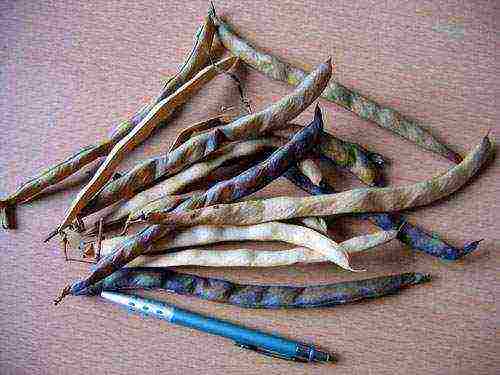
Early ripening variety "Rumba"
Why do you need blanching?
Blanching beans is a short-term treatment of beans with boiling water or steam, followed by rapid cooling with very cold water. It is made before placing the beans in the freezer.After blanching, the original color, taste and structure are preserved, since the action of the enzymes that destroy them is suspended. The process of converting sugar into starch also stops. Blanching the beans does not take long, but it does not degrade the quality of the frozen pods. They will remain delicate, and no parchment layer will appear on their doors during storage.
♦ Heading: Garden and vegetable garden.
♥ Tags: beans
